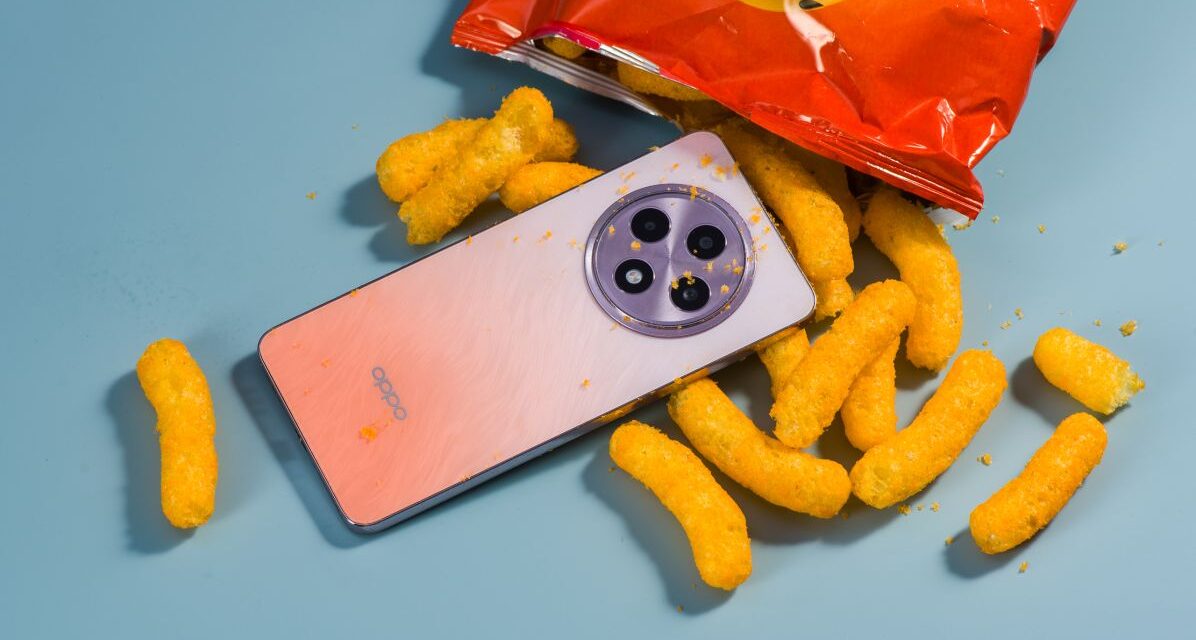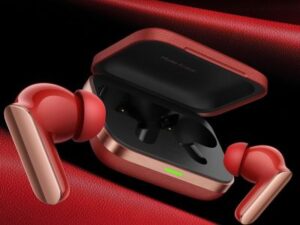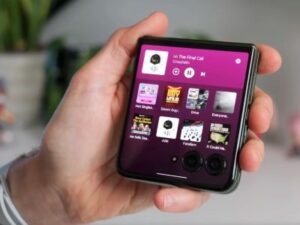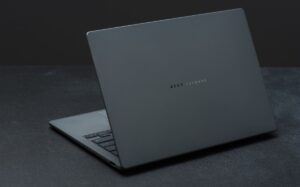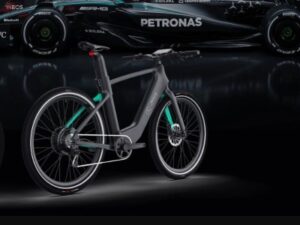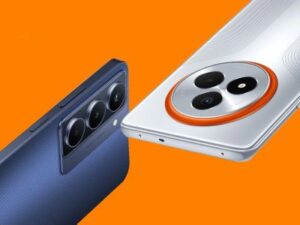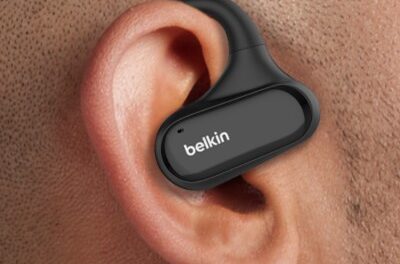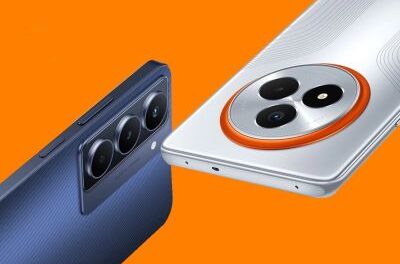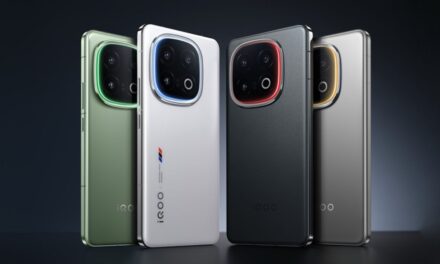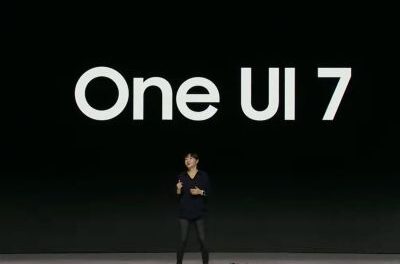They say OPPO Reno12 F takes a hit, is not afraid of water, dirty hands and cold. But talking is one thing, and withstanding all the tests in practice is quite another. Today we are testing the mid-range smartphone for strength. Literally.
Once upon a time, when mobile phones were still with buttons, the first devices with protection from everyday hardships appeared – devices with an aluminum frame and rubber plugs on the connectors that were not afraid to fall into the snow or on the asphalt. Time passed, technologies changed, at first the protection became built into the design of simple phones, then impressive bricks with thick frames, rubberized sides and recessed screens appeared.
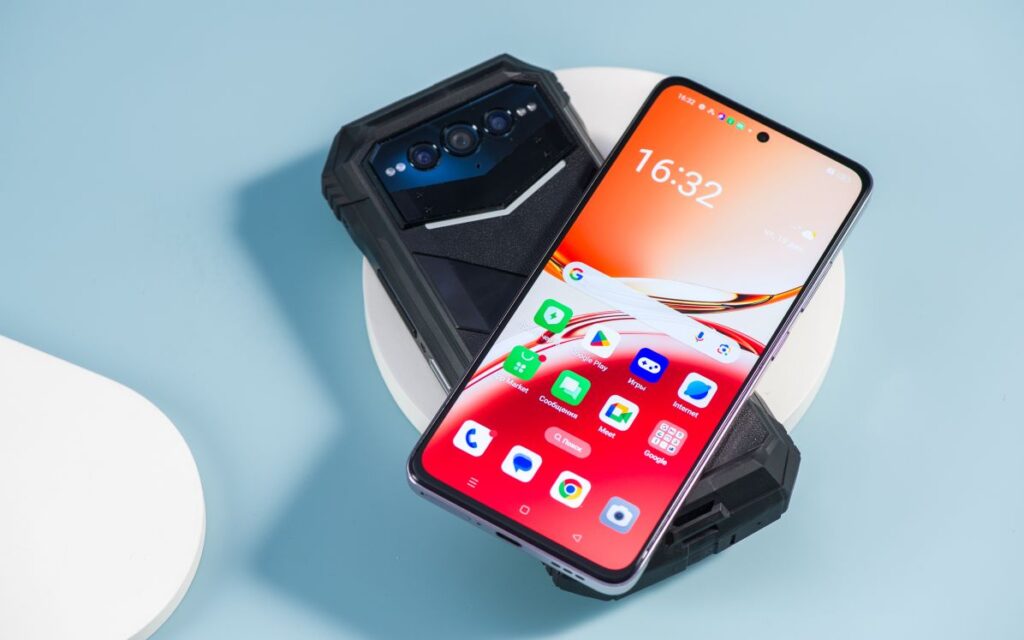
And then somehow it so happened that ordinary flagship smartphones slowly began to adopt some solutions – impact-resistant glass, steel frames, sealed cases, water-resistant speakers. Now the classic rugged smartphone is a device for men on a drilling rig or a logging site somewhere in Siberia. And we have in our hand’s ordinary models of the middle price segment, which can withstand such things that no “protected” could even dream of ten years ago.
OPPO Reno12 F Master of Disguise
Nothing in the Reno12 F gives away a model with increased survivability. Outwardly, this is an ordinary smartphone, of which there are millions. Large AMOLED screen (6.67 inches), moderate weight (~180 grams), 5000 mAh battery, 45W fast charging. An ordinary camera unit, barely protruding above the back panel. Judging by the design and materials, it is clear that this is not some flagship with a titanium frame and sapphire crystal, but the most ordinary device – made of glass, plastic, with a filling of microcircuits.
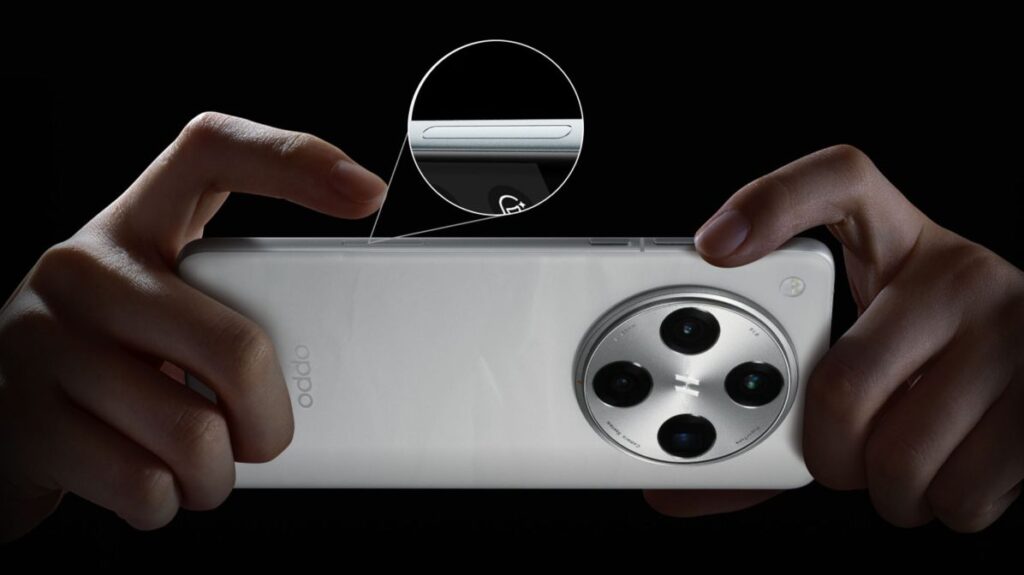
Inside there is an octa-core MTK Dimensity 6300, 8/12 GB of RAM, 256 or 512 GB of UFS 2.2 storage and a trinity of conventional cameras – a 50 MP main camera with optoscope and phase autofocus, an 8-megapixel wide and a two-megapixel macro module. Of the unusual, only 45W charging (faster than some Korean flagships). The average price on marketplaces fluctuates around 25 thousand rubles. Usually, for such devices, the first fall becomes the last. But the OPPO Reno12 F is an unusual smartphone.
OPPO Reno12 F Thirty-three misfortunes
Of course, falling on a hard surface and a broken screen is one of the most frequent and expensive breakdowns of modern smartphones. It’s good if the glass is simply covered with a network of cracks, but does not lose its sensory functions, and you stay in touch. But it happens that the touchscreen begins to glitch, or the display is covered with artifacts due to damage to the conductive layers of the matrix.
In second place, perhaps, drowning. The market is still full of models with weak or no moisture protection, since now all phones, except for clamshells, are a monolithic brick made of glass, metal and plastic, assembled on latches and glue. And if you don’t have a top-of-the-line model, a heavy downpour, a fall into a puddle or a sink will be a ticket for a smartphone not even to repair, but immediately to scrap. Water damage is insidious – it may not appear immediately.
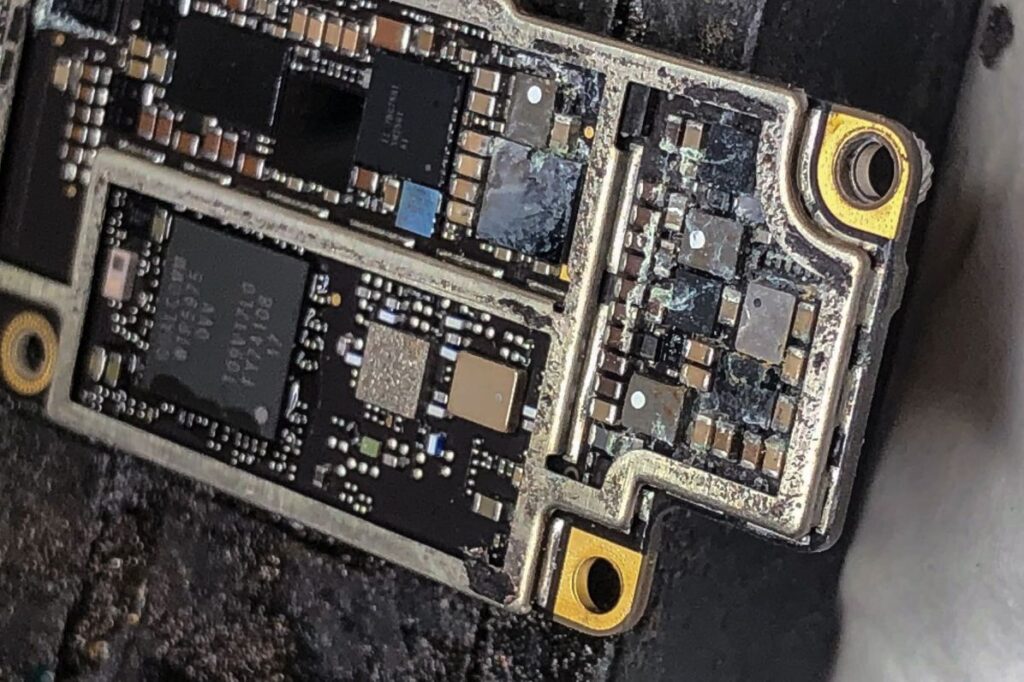
Corrosion is especially insidious due to aggressive environments. If you stain the USB connector with some drink like soda, dry it poorly, there is a coating of acid compounds on the contacts – the writing is gone. At the next charge, under the influence of current and atmospheric moisture, caustic compounds will begin their insidious work. If water itself serves as an insulator, then acids and salts are an excellent conductor.
The worst incident is a combo of falling and polluted water. Microscopic cracks or dynamic deformation of mating parts, changes in pressure inside the device due to impact and depressurization, plus an aggressive environment are an easy way to buy a new smartphone. Not because you want to, but because after a while the existing one will simply go out and not turn on.
OPPO Reno12 F Engineers and chemists against crooked hands
At the very least, they learned to cope with the shock load. Modified tempered glasses make the display, if not immortal, then at least strong. Everything works thanks to the process of manufacturing such coatings – the blank of protective glass after casting into the mold is cooled sharply and for a short time, after which the temperature tempering of the product is carried out.
Thanks to this, the atoms in the outer layer of protection have time to form a clear crystal structure and “squeeze” those atoms inside that were in a “liquid” state and did not have stable bonds with their neighbors.
Since solids shrink during cooling and interatomic distances are reduced, and the inner layer is not allowed to freeze quickly, it turns out to be something like an eternal “spring” that is always on edge.
There is no longer enough space for the correct and calm construction of the crystal lattice, the outer layer is formed, so inside the tempered glass is constantly under the stress of atoms repelling each other, planted too tightly. Applying an impact load to the surface of such glass leads to even greater “recoil” from the inside of its structure, which makes it possible to keep the crystal lattice of the outer layer in a stable position.
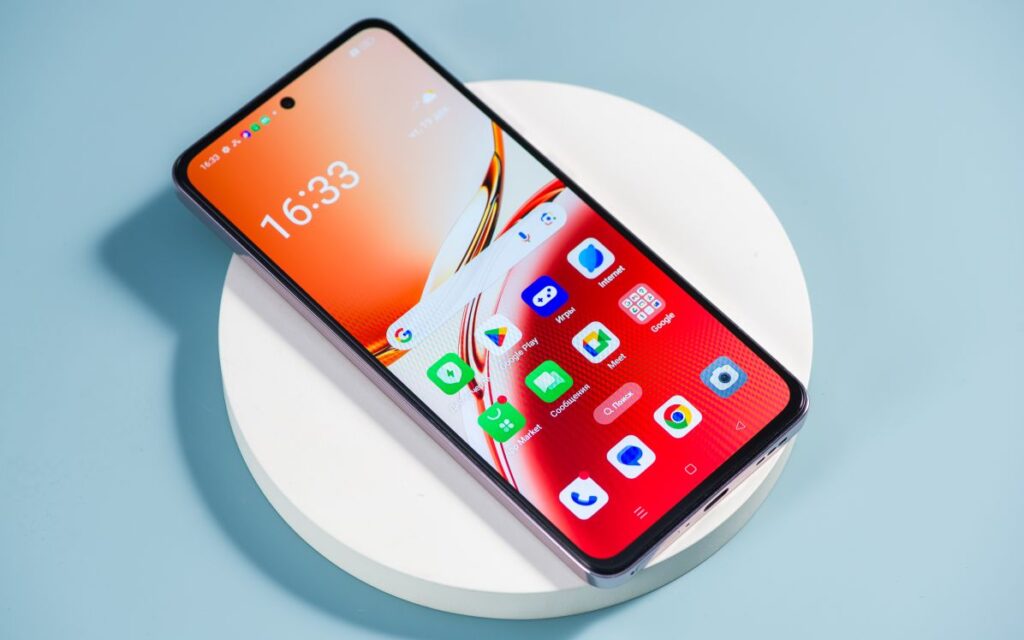
Scratch protection, by the way, has also become part of the overall picture in tempered glass. Scratches occur when, when two objects come into contact, one of them, due to the higher binding energy of the crystal lattice, can destroy the bonds between the atoms of another substance. To put it simply, the one who has a steeper crystal lattice is stronger.
Diamonds and sapphires, some of the hardest substances on the planet, have an almost perfect crystal lattice. Hardened glass is hardened by chemical modification or deposition of special coatings from a gas mold on the surface of the finished product. They create a protective “shell” only a few atoms deep, so knives or keys cannot leave marks on the surface. But microscopic particles of carbon, sand and other heavy-duty crystals contained in city dust and falling between steel and glass are quite capable of leaving marks.
Properly selected materials of Asahi Glass AGC DT-Star2 protective glass, reasonable thickness and competent internal structure of the smartphone allow OPPO Reno12 F to survive even strong impacts on the screen without significant damage.
OPPO Reno12 F Capacitive screen against wet hands
Do you remember that mobile phones used to have touchscreens with a soft film coating? They read the pressure using the resistive method: in fact, there were microparticles between the two films that separated them, and the films themselves had transparent conductors: some were horizontal, others were vertical. The closing of the two tracks was carried out by pushing the screen in the right place.
The technology had a lot of disadvantages – wear of surfaces, fear of physical impacts (the films could be easily pierced, and the matrix itself could be broken), a decrease in the brightness of the screen and the lack of multitouch.
Nothing prevented us from making three films – two horizontal and one vertical, but there was no way to separate the two touches, because the screen registered four points of intersection of verticals and horizontals from two real fingers. All these shortcomings are devoid of capacitive technology, which was popularized by the iPhone. All but one. Resistive screens didn’t care if you were wearing gloves, if your hands were wet, or if you had a toothpick in your hands.
Phantom presses appear, the content on the display begins to twitch back and forth, and the keyboard dials some kind of nonsense. Using such a display in the rain or just with wet hands is a below-average pleasure. Of course, if you don’t have an OPPO Reno12 F. What’s the point? The problem of false alarm of the sensor layer can be bypassed by software methods. And if Apple is not particularly worried about this topic, then OPPO did everything wisely.
Splash Touch continuously monitors and adjusts the “baseline” signal of the capacitive sensors. If it’s wet outside and you touch the display, the system understands that the baseline signal level is too low and raises it – your capacity is much higher than that of a drop of water, so all indicators below a certain level can be ignored. And, on the contrary, in severe frosts, the system cannot reliably recognize hands in signets, it only understands the very fact of touching the display.
Automation raises sensitivity to the maximum, so the phone begins to respond to touch in adverse conditions. The system is not simple, it took a lot of time to refine and calibrate all parameters, but now it provides more than 95% of touch recognition in six everyday scenarios: rain, water droplets, water mist, sweaty hands, low temperature and grease stains.
OPPO Reno12 F A body that can be washed under the tap
The situation with the protection of devices from water is generally fun. First, manufacturers declare some IP68, they say, the smartphone can be submerged for half an hour to a depth of 10 meters, and then in small print somewhere below they write “water damage is not covered by the warranty”. Why is that? The answer is simple – IP standards describe laboratory conditions. The smartphone is slowly lowered into a bath with clean water without impurities and it lies there quietly. No currents, no sea salt, no sudden movements.
Therefore, in countries where it is customary to sue over every little thing and put thousands of footnotes and disclaimers, there will always be someone who will put the phone at the bottom of a boiling pot and then complain that there was only 20 centimeters of water, and it was clean. In fact, many smartphones withstand much more than the cautious manufacturer claims.
Even a sponge with detergent. If you deliberately do not apply water pressure to the speaker mesh or USB connector, the model will survive such tests without any problems. If the jet has a small pressure, it is much easier for the water to roll along the thinnest mesh and fall than to break into microdroplets and crawl through narrow holes into the medium, which has internal pressure.
The Type-C connector has rubberized seals that do not allow moisture to pass through. If you do not pour water into it purposefully, and after water procedures you also blow it properly, nothing will happen to it. Especially if the water is clean. And if not very much, a few drops of alcohol and a compressed air cylinder or a banal household hair dryer will easily get rid of dirt.
Give the fool a glass ball…
Although our OPPO Reno12 F withstood shocks, washing under the tap, and a bath of chips, it should be remembered that the joke about men and a Japanese chainsaw ended so-so. If you want, you can break and ruin even the most secure phone on the planet. And the Reno12 F is just a little better prepared for everyday troubles.
This is a regular mid-range smartphone. Thin. Light. With fast charging. But if your child has hook hands, a relative has pants with sleeves, or you want to be sure that if something happens, you will not be left without communication, the OPPO Reno12 F will not let you down. And he won’t tell anybody where he felt last night.

